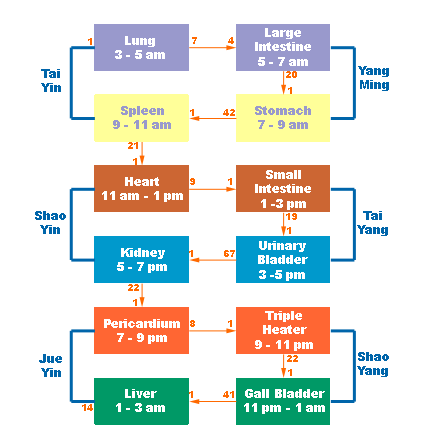Acupuncture Points
Theory @ Yin Yang House
Acupuncture Points Database - Choose An Acupuncture Meridian
Within this section you will find comprehensive information for the meridians and acupuncture points that are used in the clinical practice of acupuncture.
Point of the Day

- Generally, moves stagnation and clears heat - Hepatitis, Jaundice
- Lin Disorders.
- Medial Knee/ankle pain.
Start exploring by choosing a meridian from the list below.
Extraordinary
If you are looking to design a treatment, you may start by reading our acupuncture treatment protocol sections or our series on common acupressure points from our blog.
Generally the basis for forming a treatment plan with acupuncture is driven by their tcm diagnosis (or "pattern") and their health issues/symptoms (or "conditions"), so we have points grouped under those sections as well.
To form a treatment, reading "treating the cause vs. the effect", "designing an acupuncture treatment" and "acupuncture treatment prognosis guidelines" on our blog will be good starting points.
TCM Pattern of the Day
Sore a/or weak back/knees, sensation of cold, aversion to cold, weak lower limbs, lassitude, clear copious urine, poor appetite, loose stools, edema (which can be severe).
The chart below shows the flow of meridians, times of highest activity, and the entry/exit points on each channel.

What is a Cun?
Throughout the acupuncture point section, locations will often reference a relative measurement tool called a "cun", loosely translated as "body inch". The relative measurements of note are described on each main meridian page below the graphic.
For example, on the lung meridian page, after the graphic, it states "Measurements Needed" and then describes measurements such as "Cubital Crease -to- Wrist Crease = 12 cun". Accordingly half-way would be 6 cun, half of that would be 3 cun, etc. Most points are found through a combination of body landmarks and a valid cun measurement for that particular area.
A related discussion in our forum can be found here.
Meridians Glossary
If you are unfamiliar with the meridian naming conventions, the following may be helpful.
- HT = Heart Meridian, paired with the Small Intestine - see My Heart is What? for an introduction.
- LI = Large Intestine Meridian
- LU = Lung Meridian, paired with the Large Intestine - see My Lungs Are What? for an introduction.
- PC = Pericardium Meridian
- SI = Small Intestine Meridian
- TH = Triple Heater Meridian (also known as Triple Warmer - TW, or San Jiao - SJ)
- GB = Gallbladder Meridian
- KD = Kidney Meridian (also referenced as KI), paired with the Urinary Bladder, see My Kidneys are What? for an introduction.
- LV = Liver Meridian (also referenced as LR), paired with the Gall Bladder - see My Liver is What? for an introduction.
- ST = Stomach Meridian
- SP = Spleen Meridian, paired with the Stomach - see My Spleen is What? for an introduction.
- UB = Urinary Bladder Meridian (also known as bladder - BL)
- CV = Conception Vessel Meridian
- GV = Governing Vessel Meridian
- EX = Extra, or Extraordinary Points (off meridian points)
All Content 1999-2025
Chad J. Dupuis / Yin Yang House
Our Policies and Privacy Guidelines
Our Affiliated Clinics
